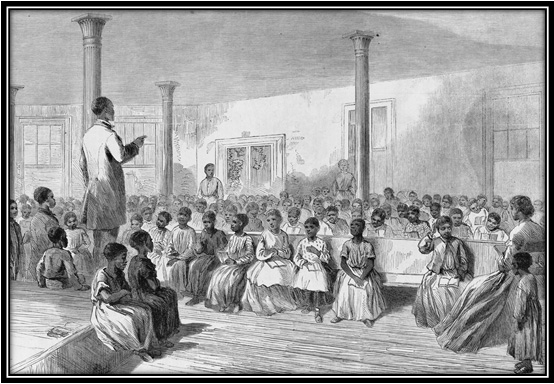What is the basic trend demonstrated by the chart above?
Interactive popup. Assistance may be required. The trend shows that African Americans had a very low literacy rate at the start of Reconstruction, but within a period of 40 years, the vast majority of them were literate. 
What types of organizations might have contributed to the trend in the chart? Does the chart provide any reasons for the trend?
Interactive popup. Assistance may be required. Organizations like the Freedman's Bureau and public schools would contribute to the trend in the chart. However, the chart does not indicate any of that. 
The largest gains for African Americans occur after Reconstruction was over. Can these gains be used to support an argument that says that Reconstruction was a success?
Interactive popup. Assistance may be required. It depends. Certainly, the movement to educate increasing numbers of African Americans began in Reconstruction and only grew larger as more African-American children were raised with a basic public education. 
Many gains from Reconstruction, such as access to voting, were short-term. Looking at the chart, does it appear that an increased education provided a short-term or a long-term gain?
Interactive popup. Assistance may be required. The gains in education continued into the next century. Moreover, while voting rights can be taken away, once a person is educated, that cannot be taken from them.
